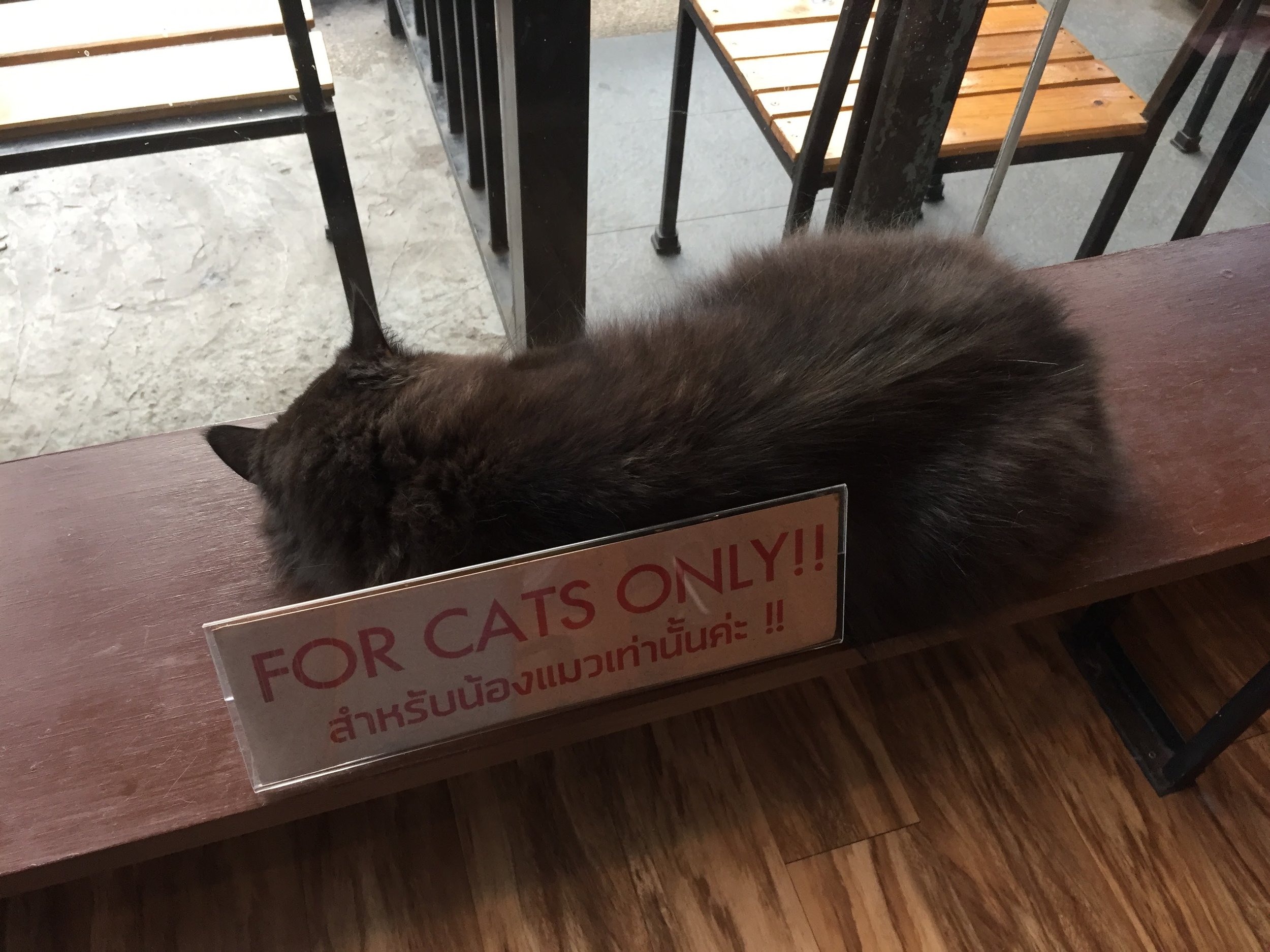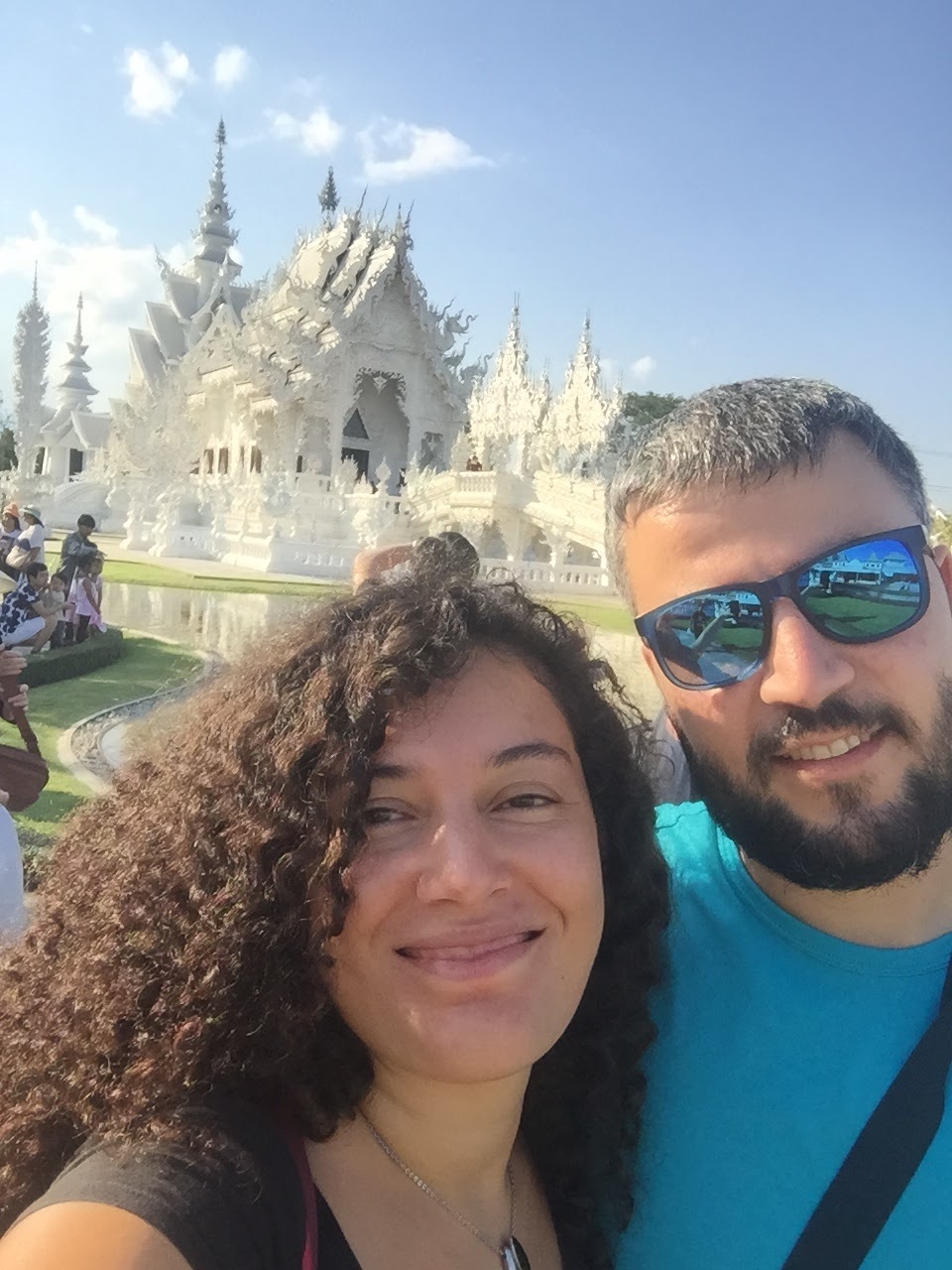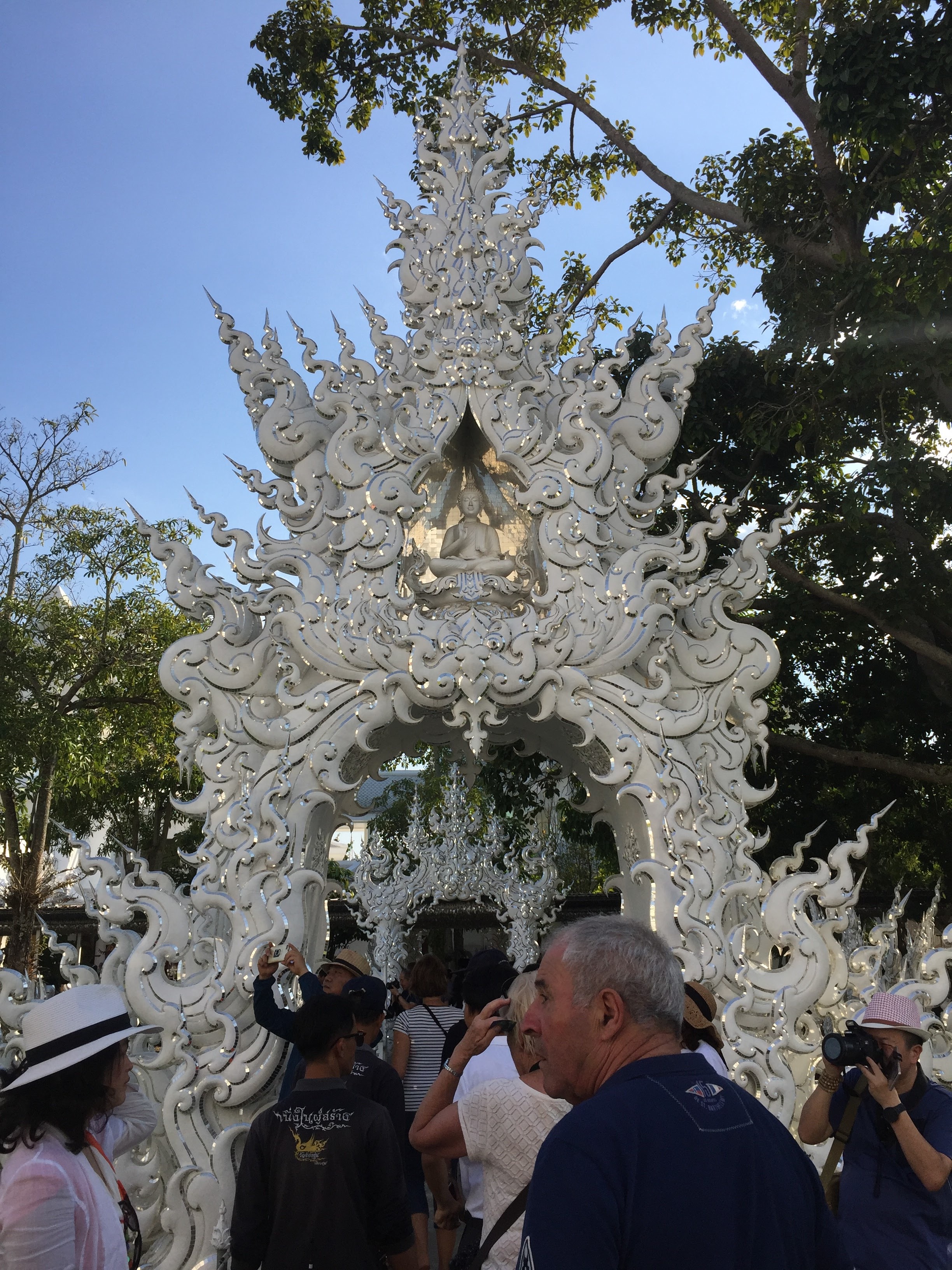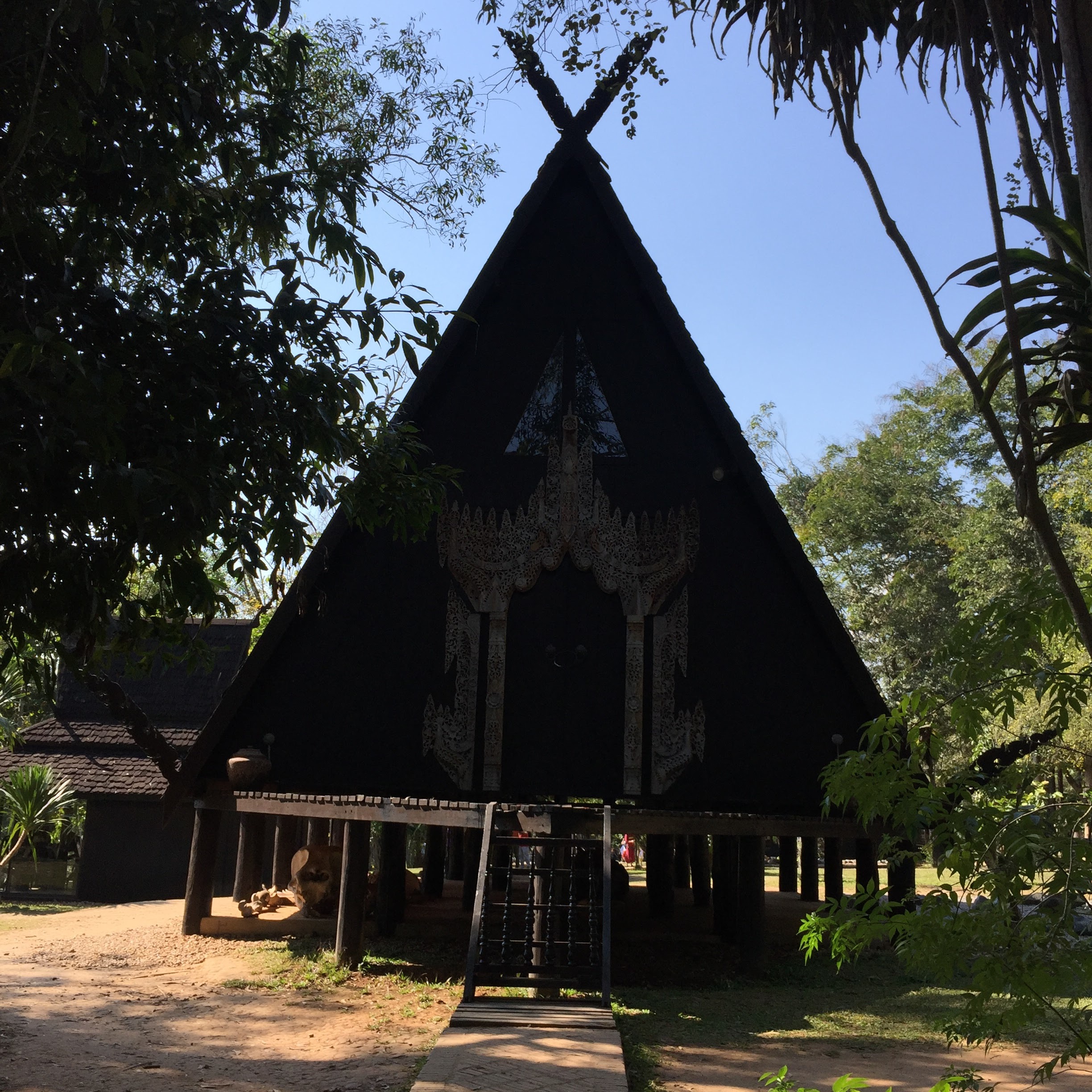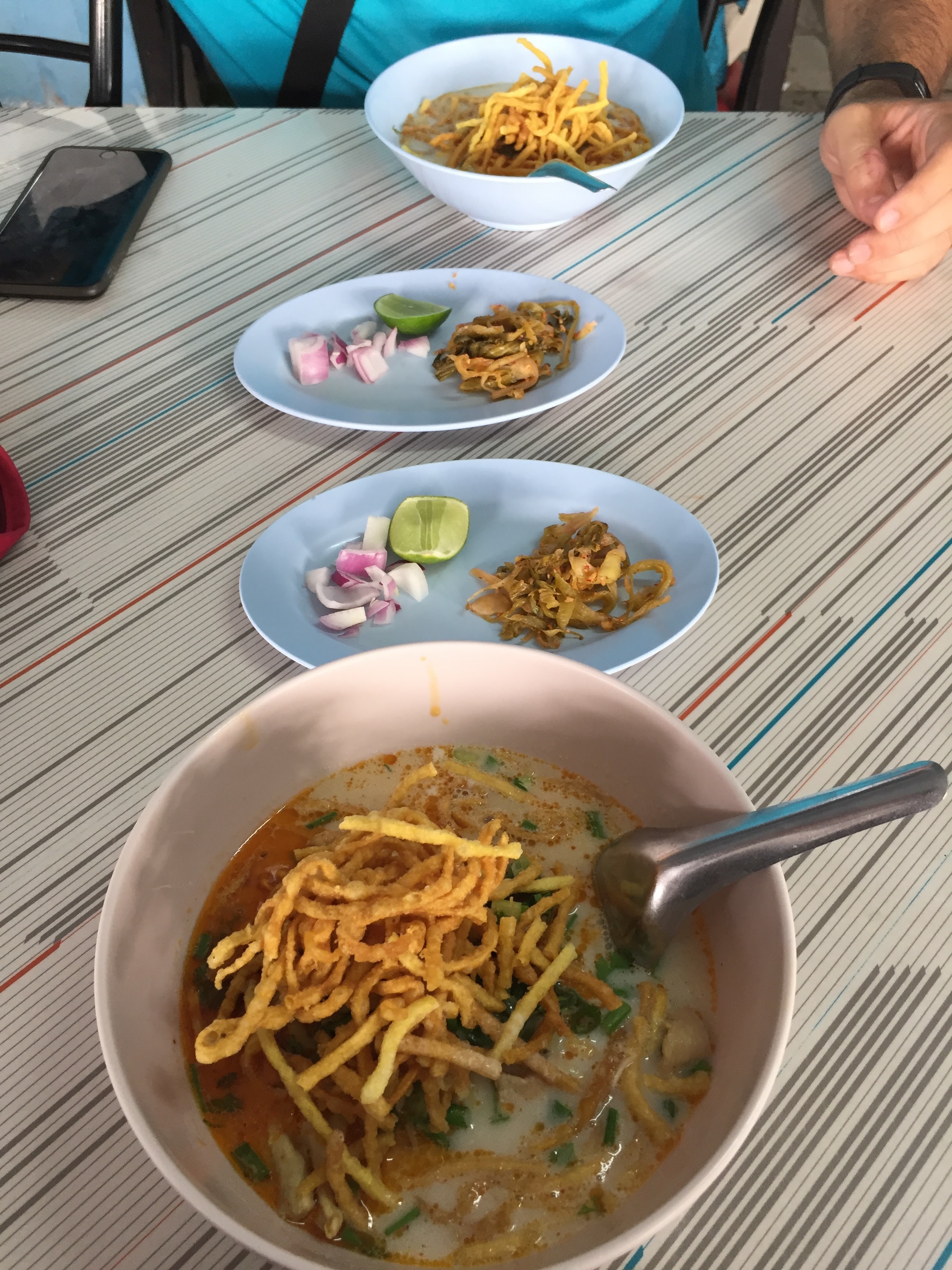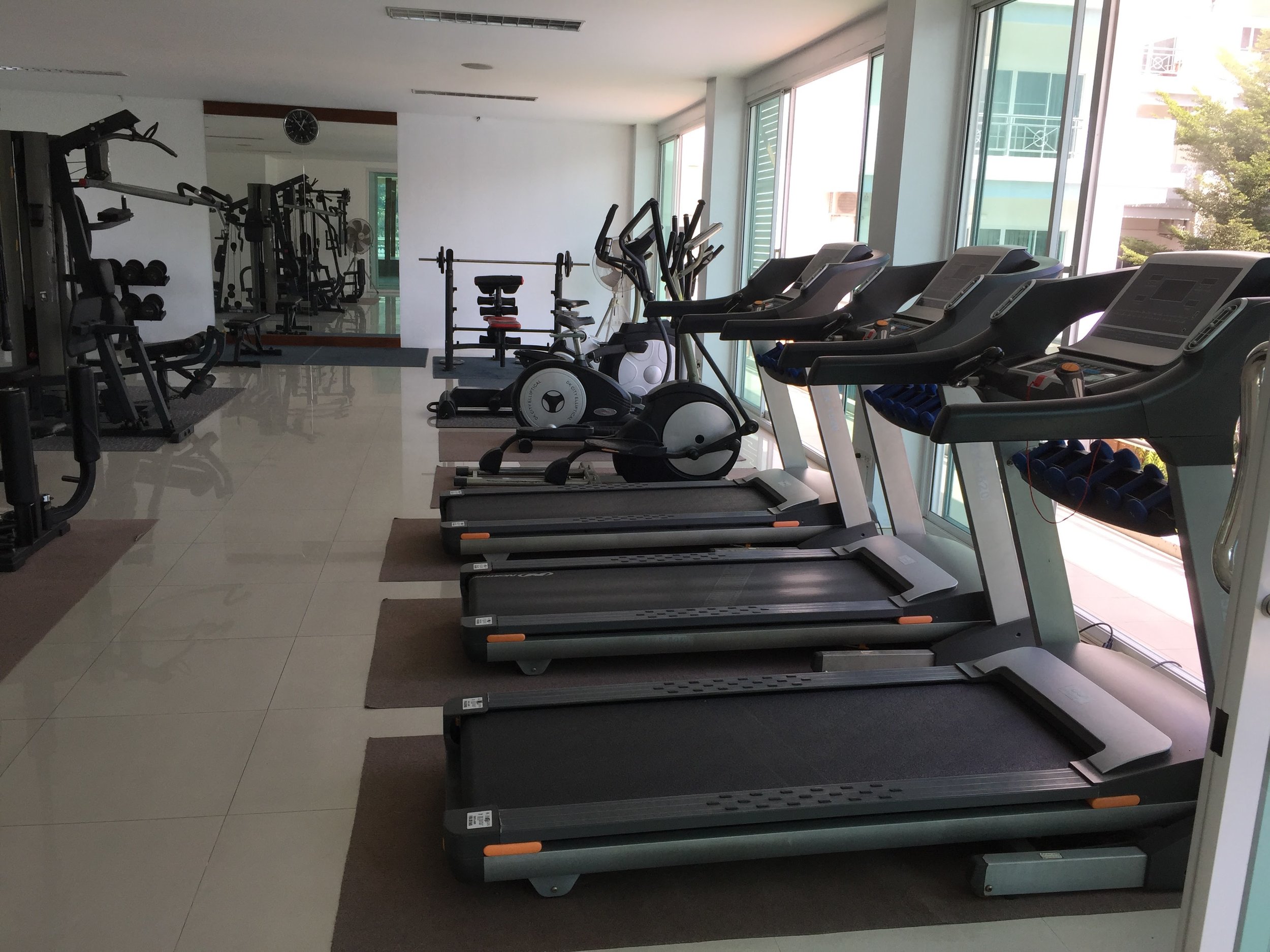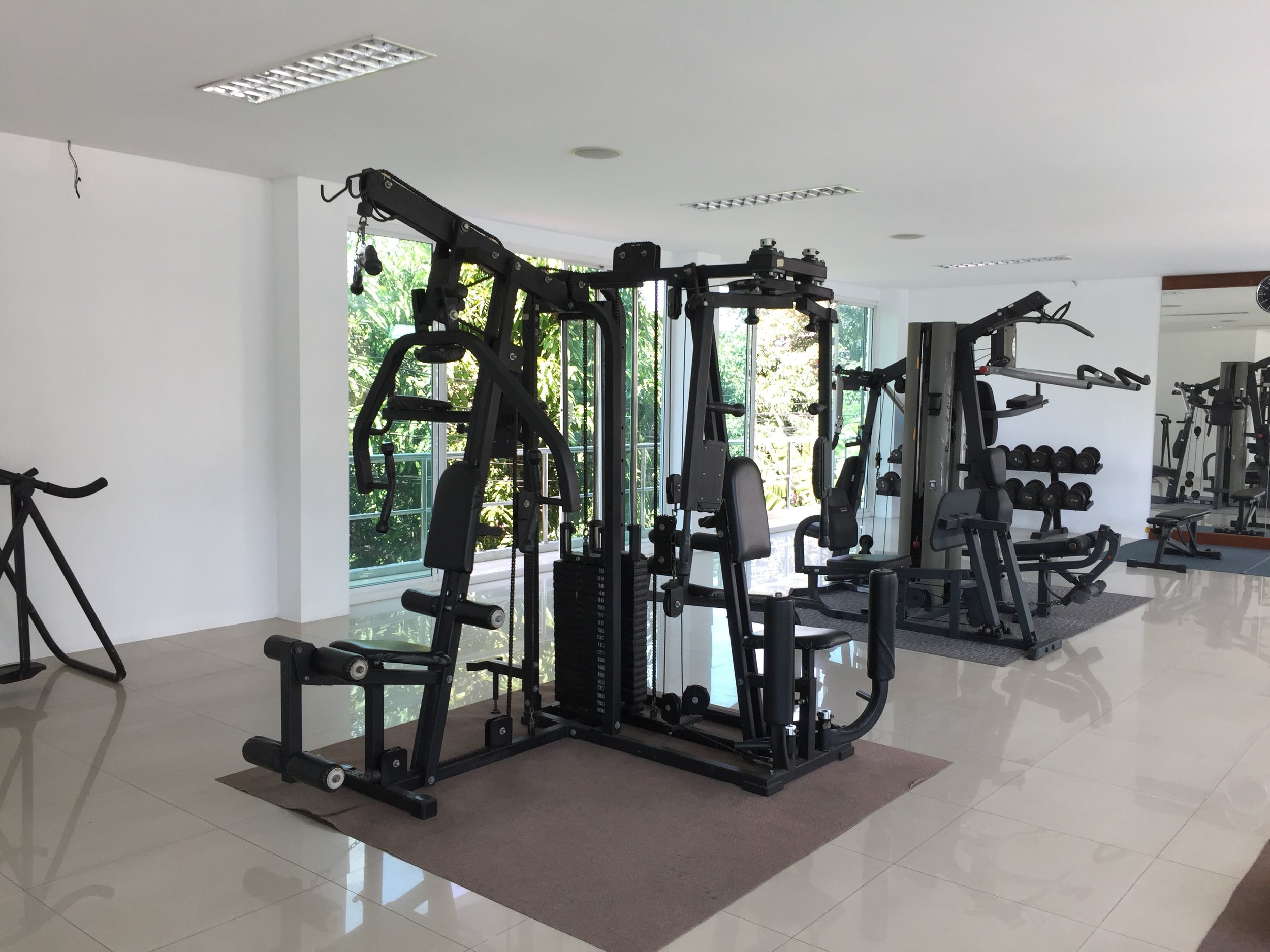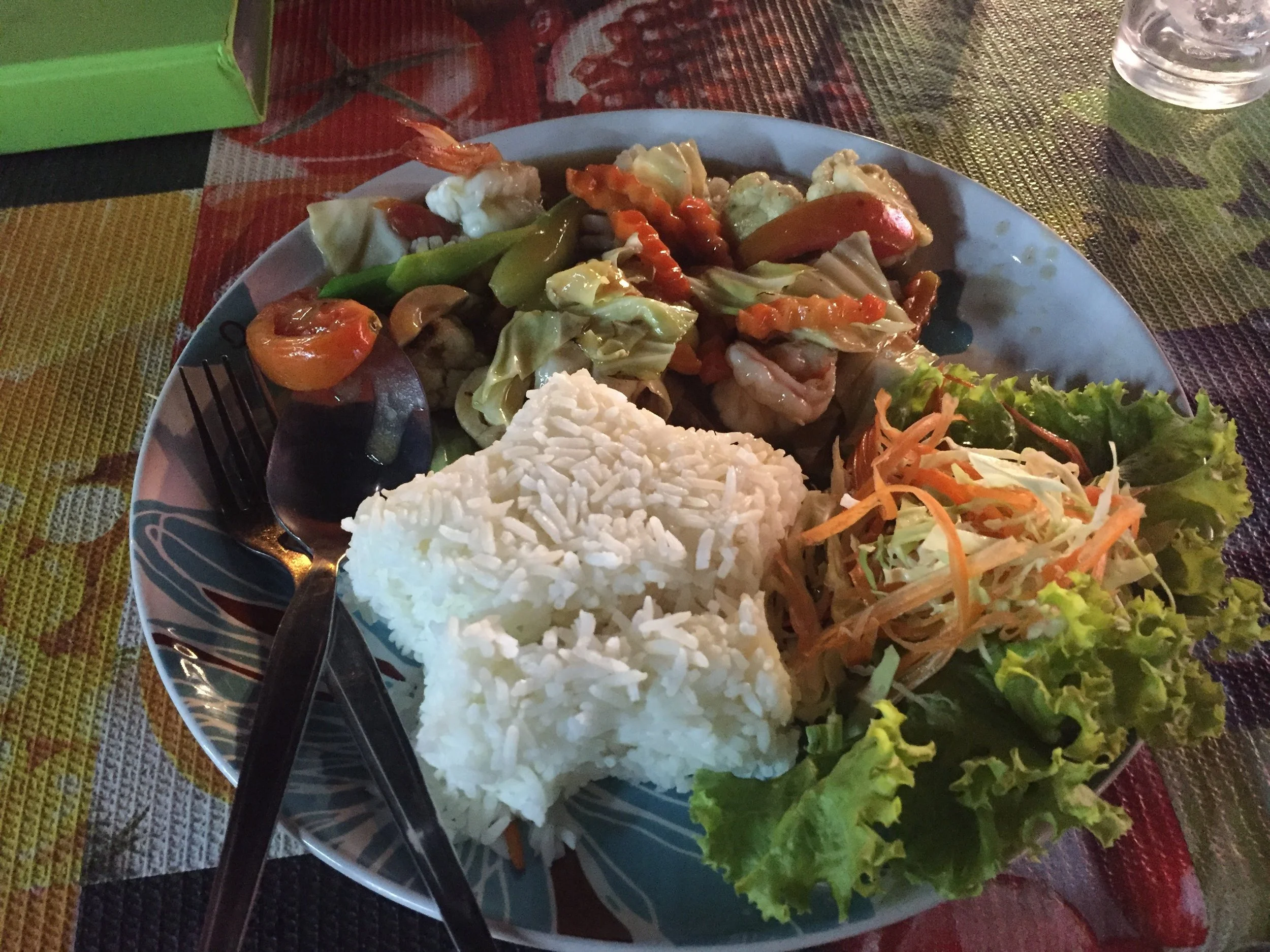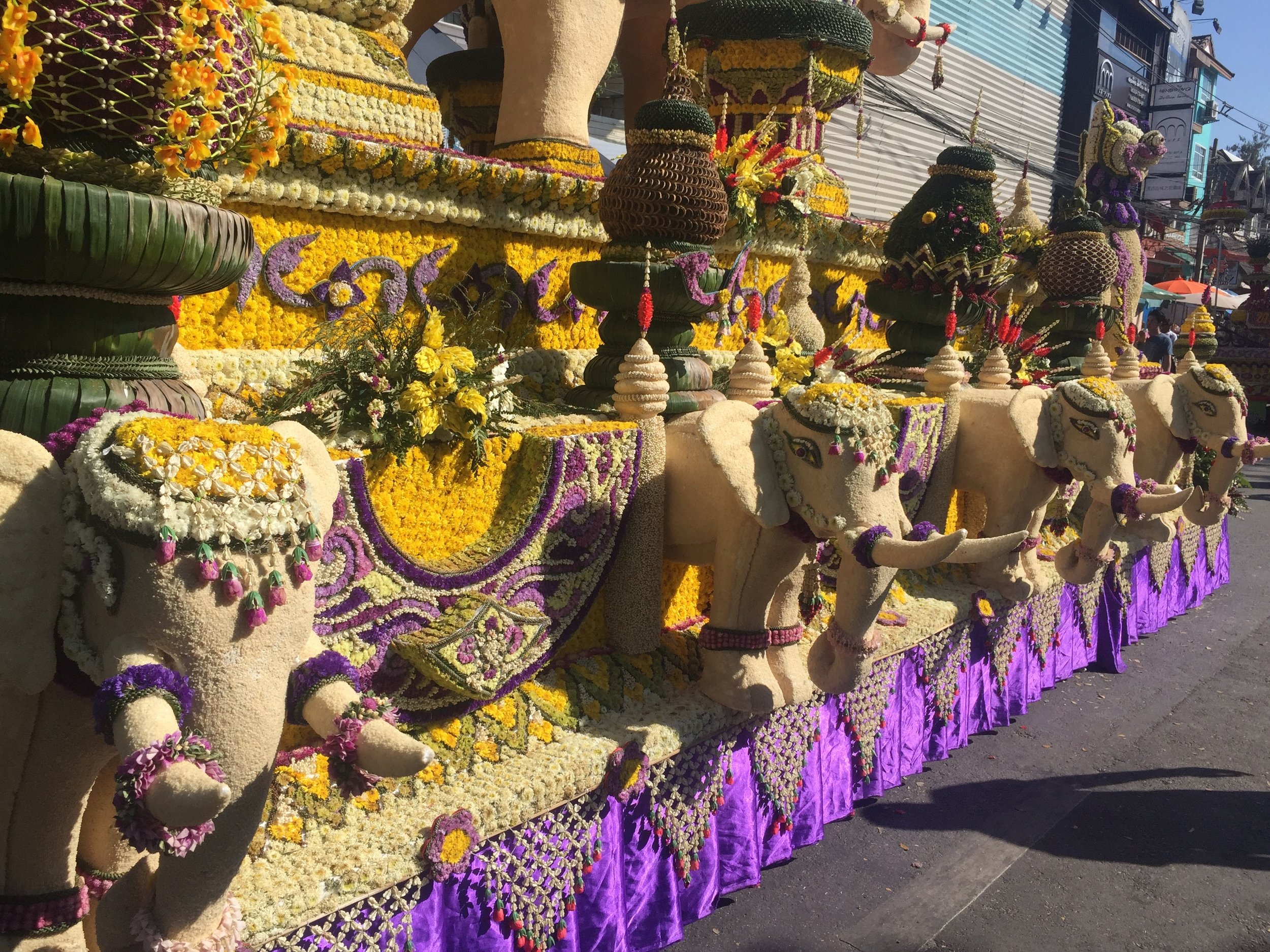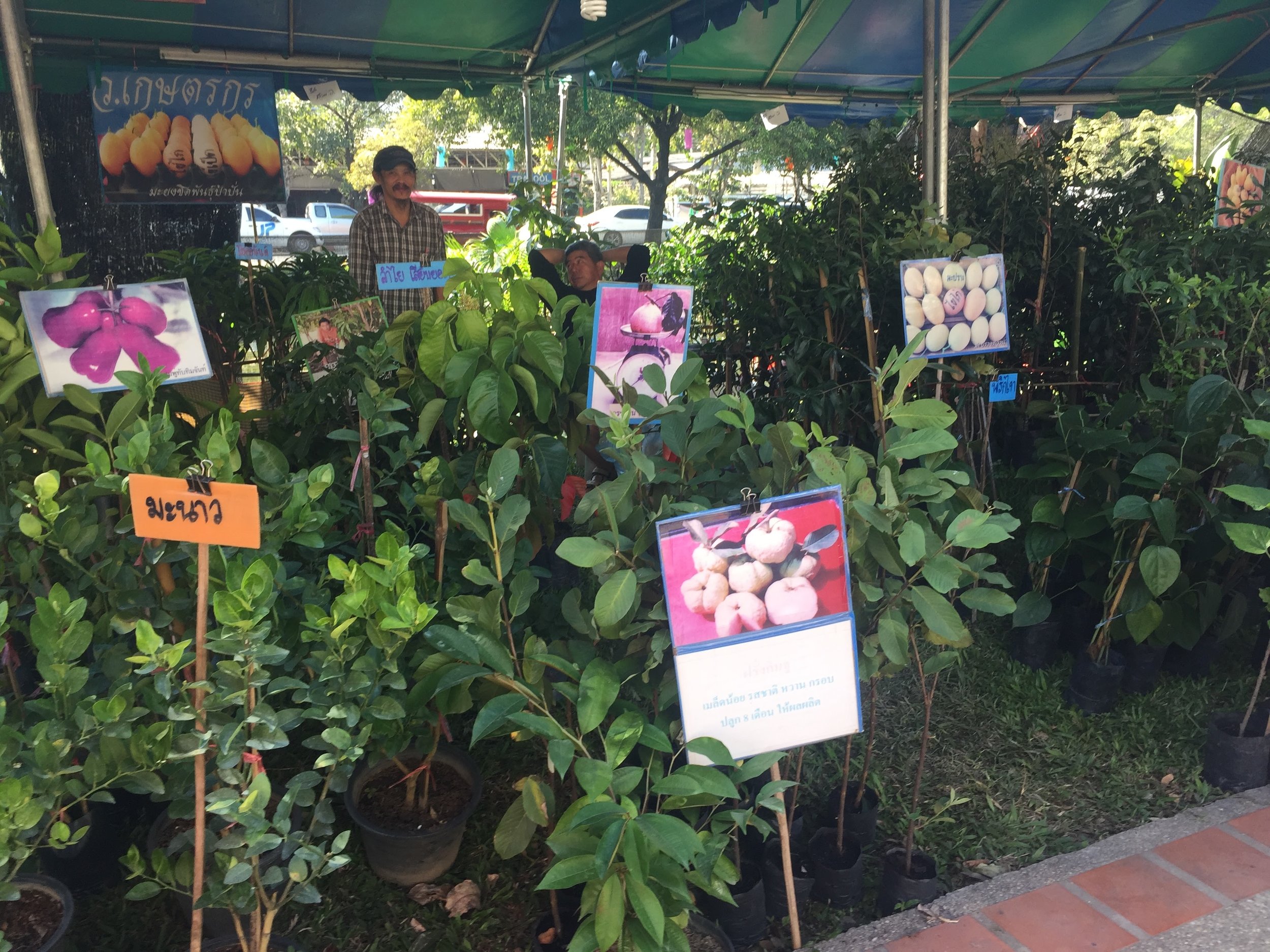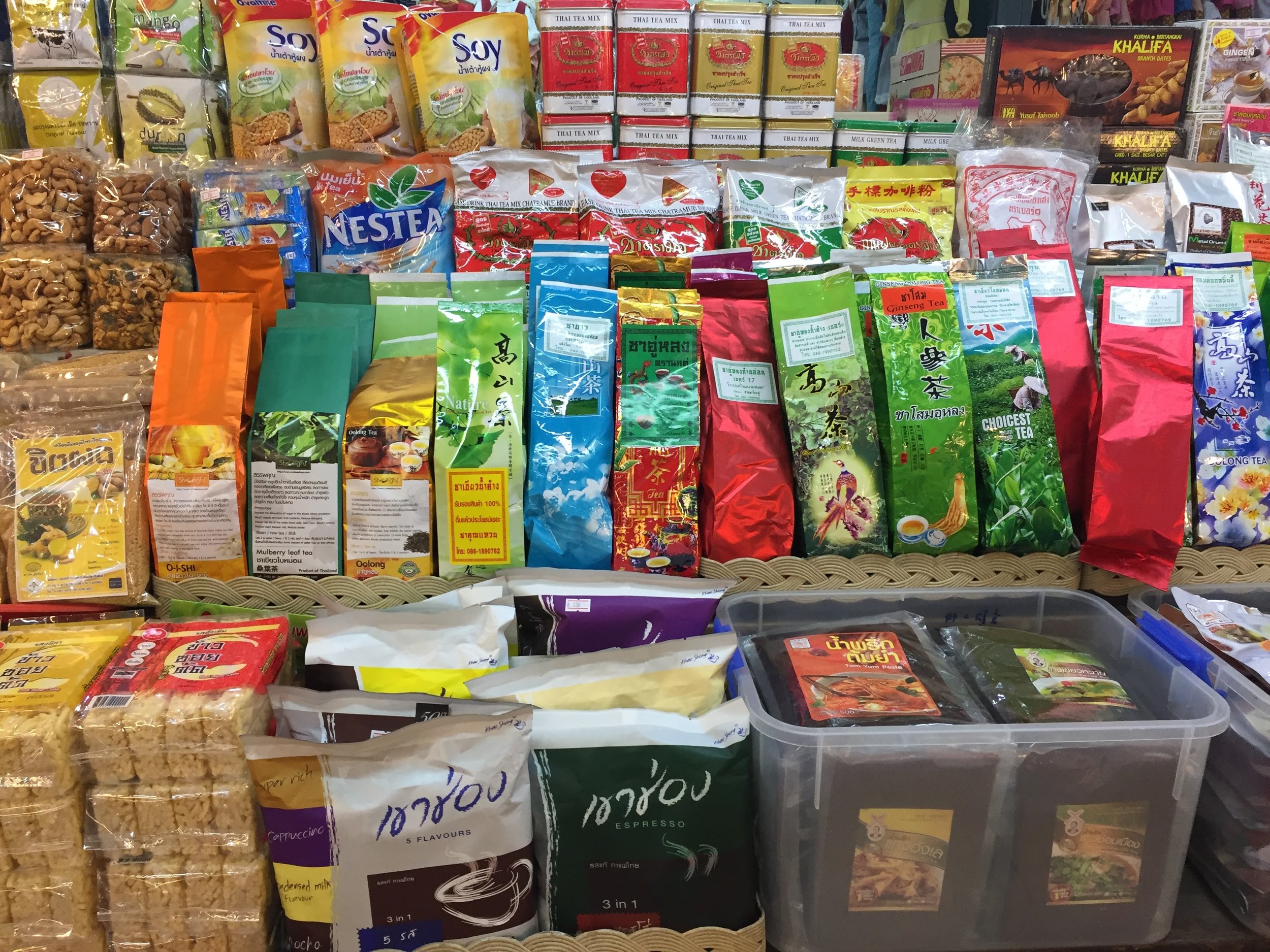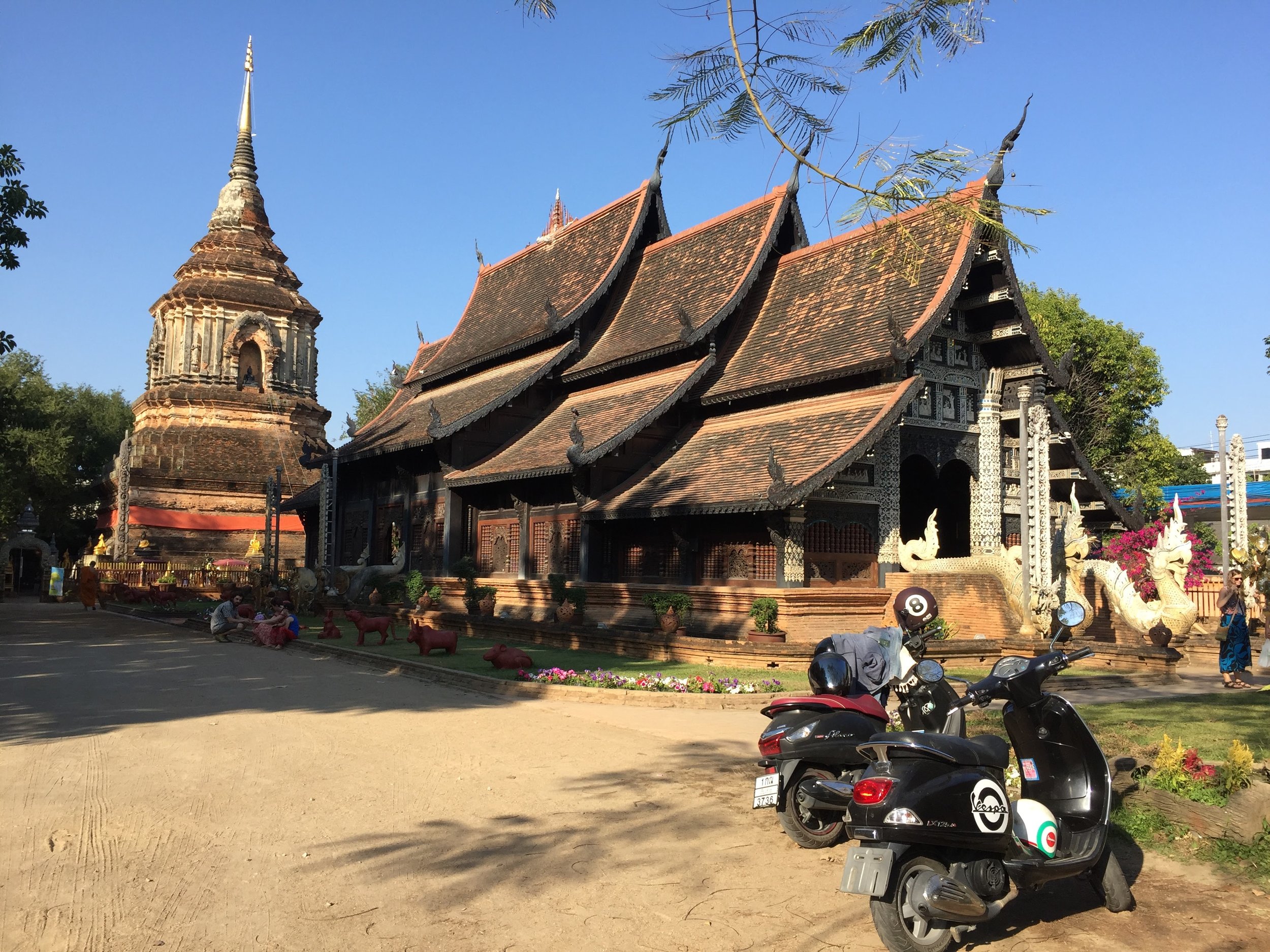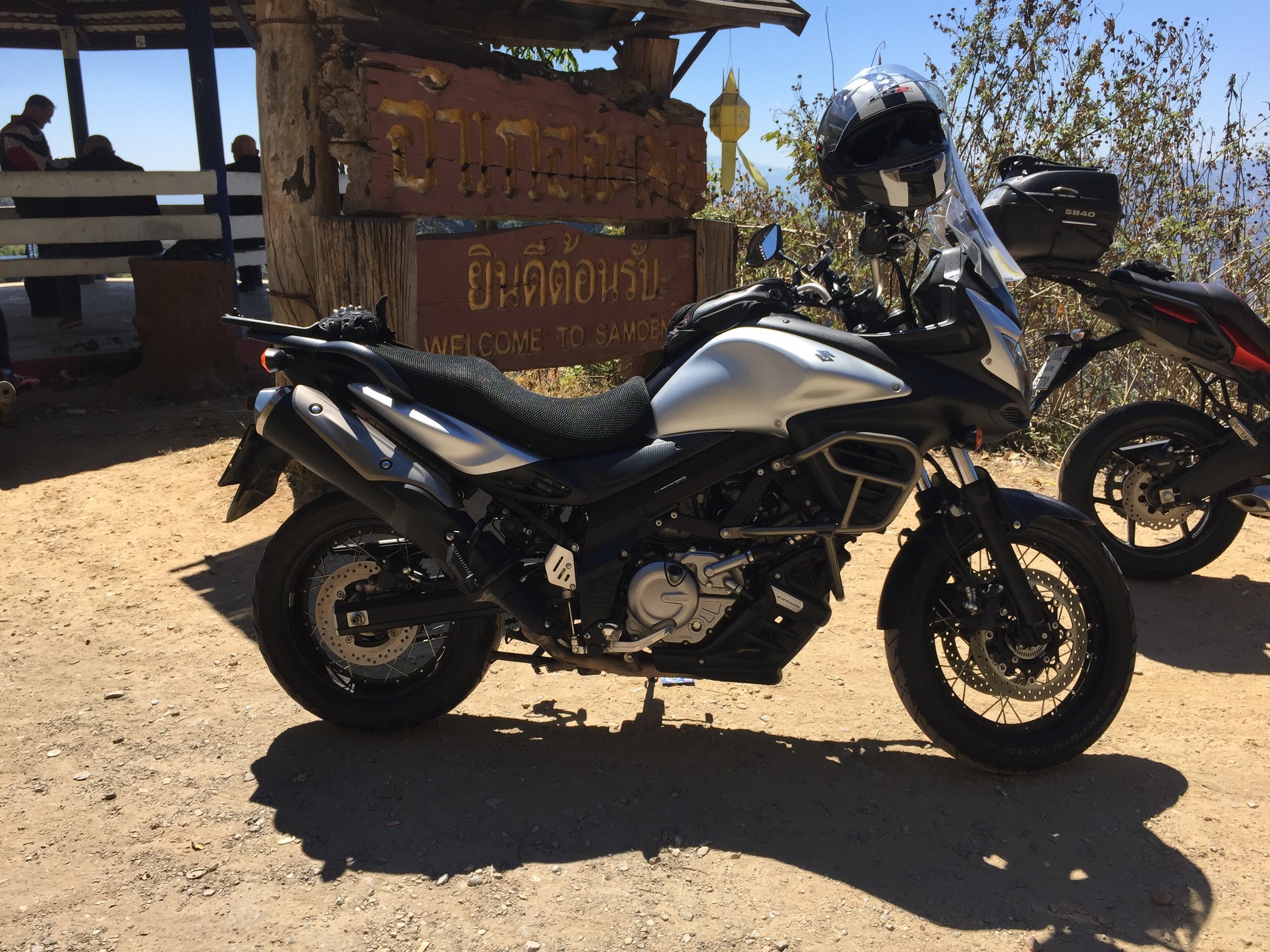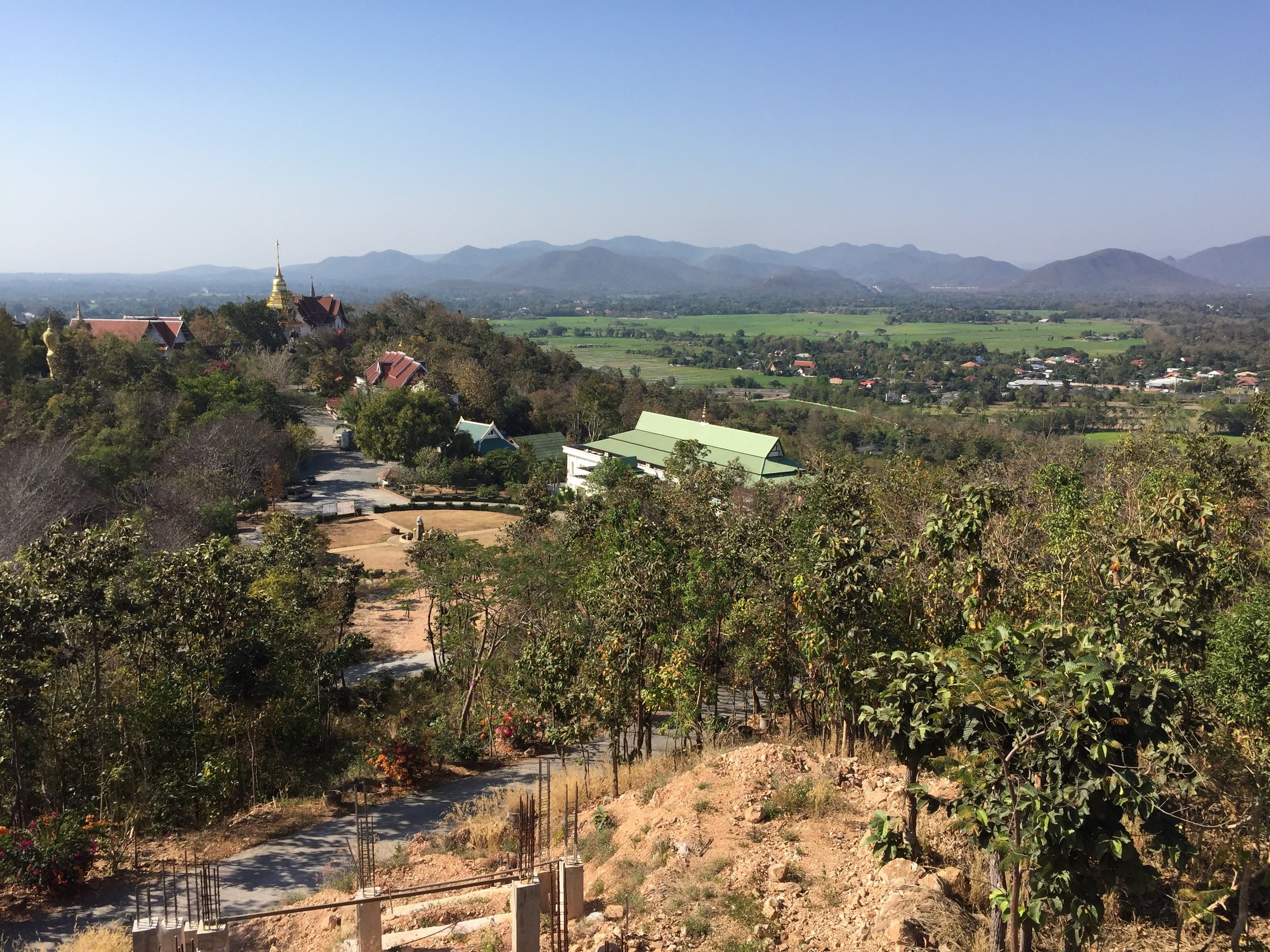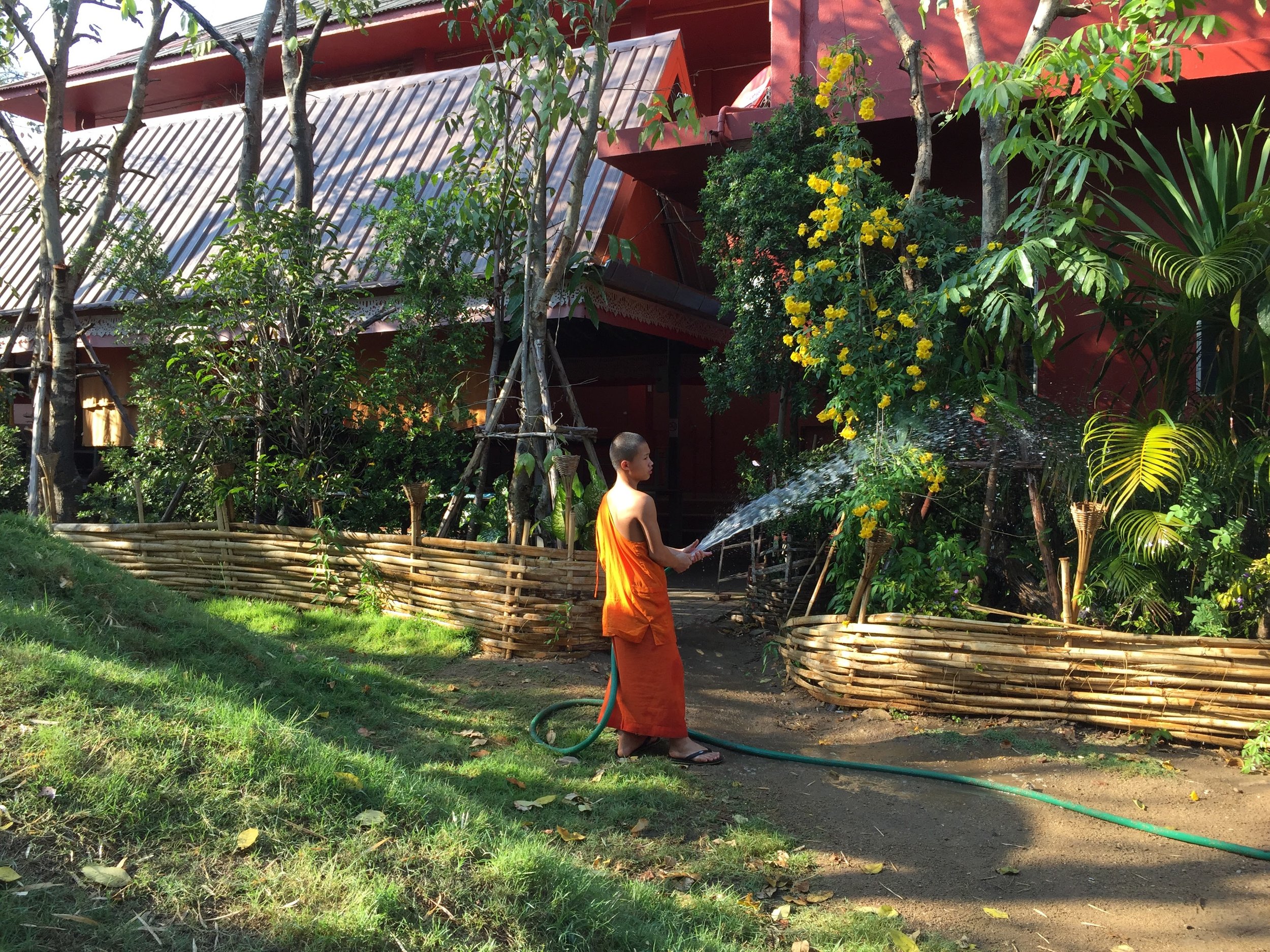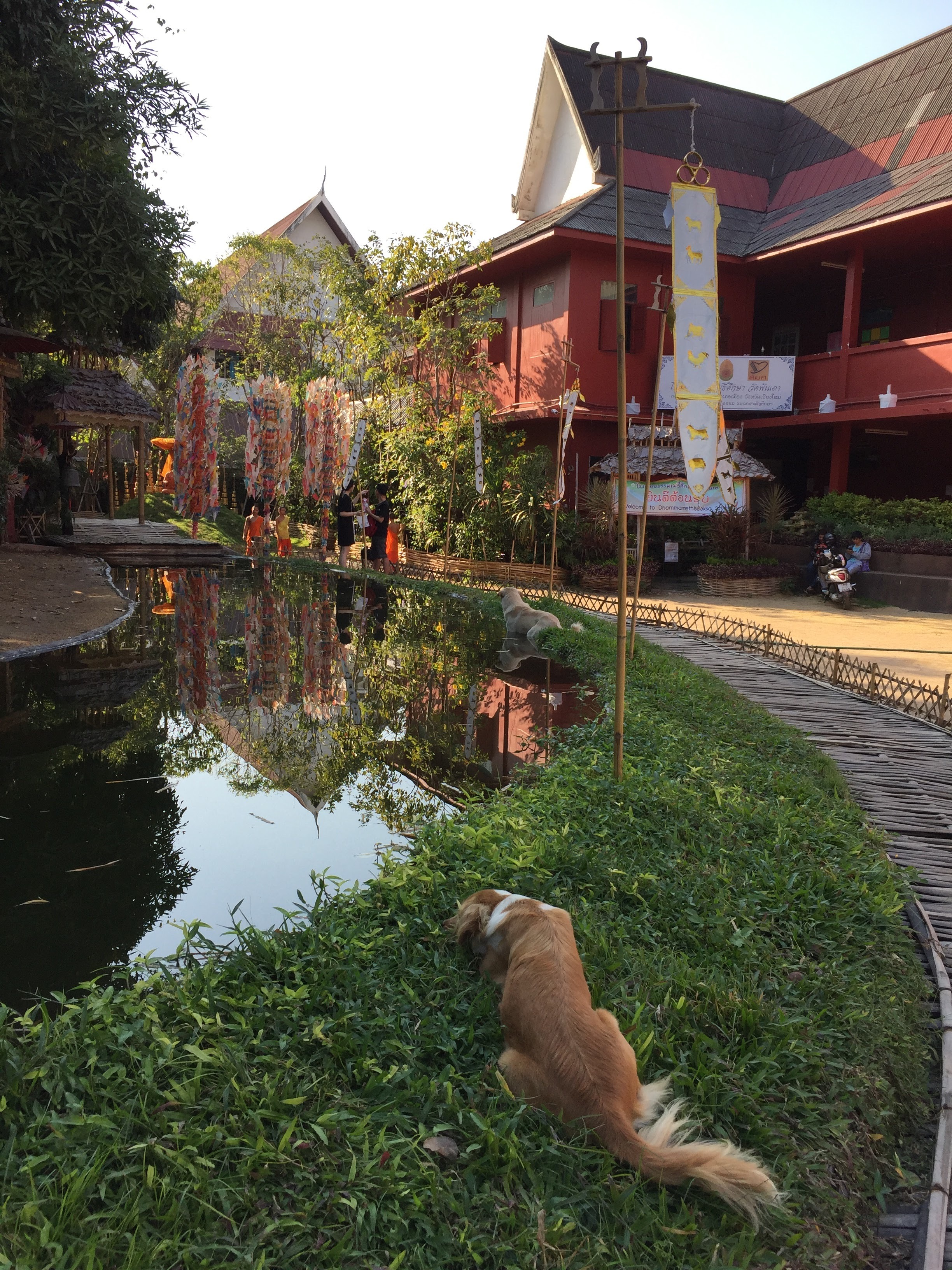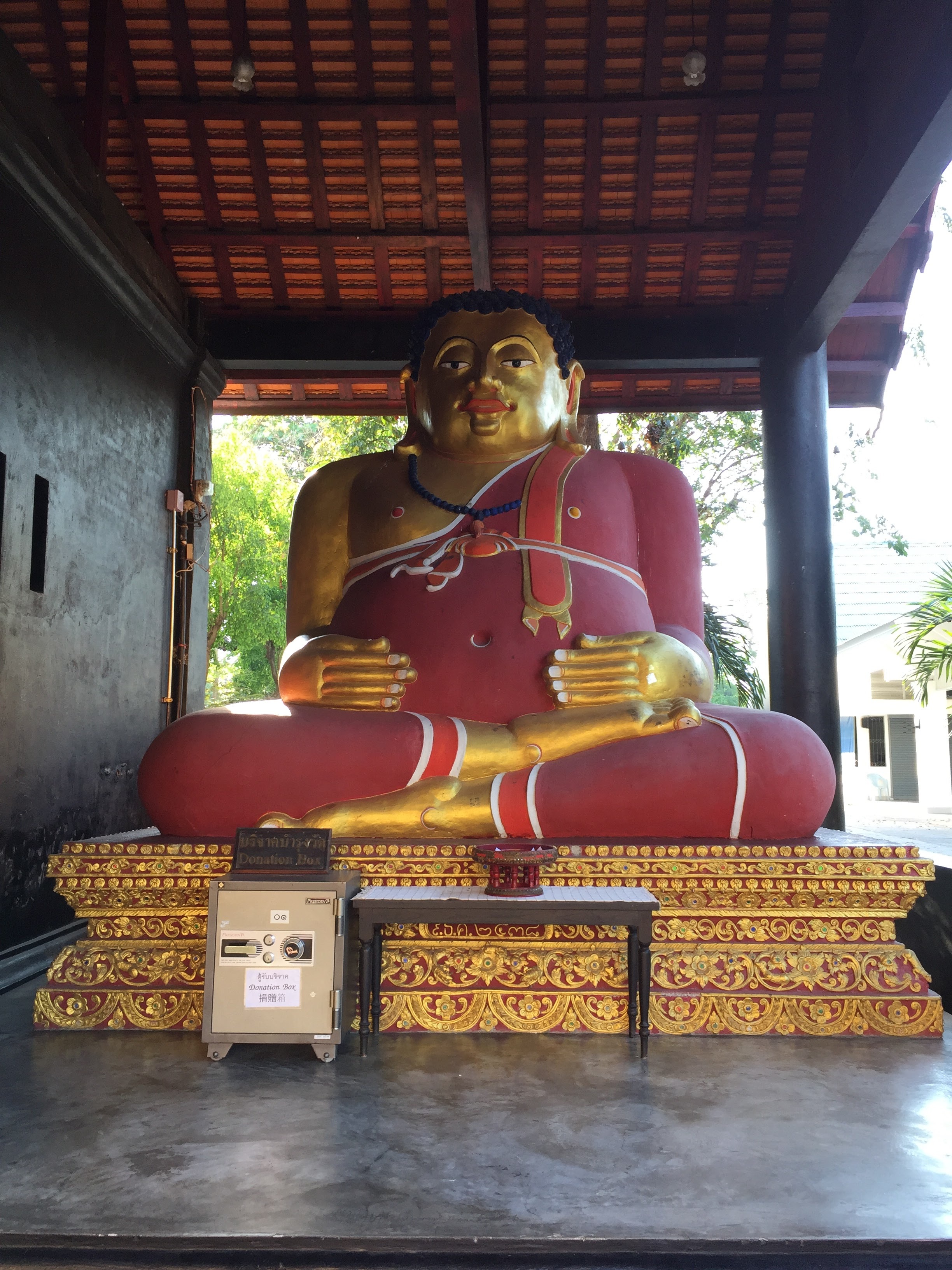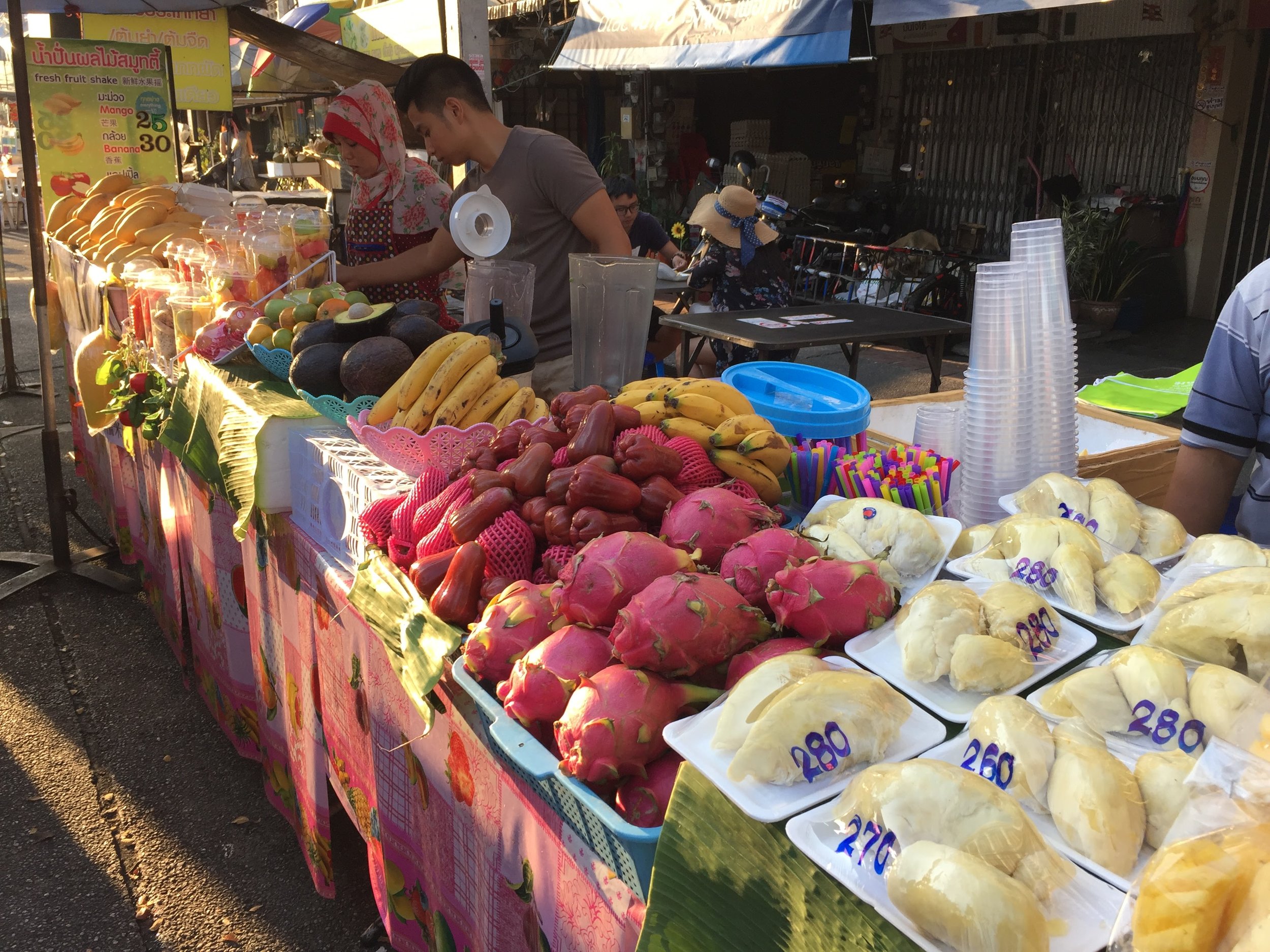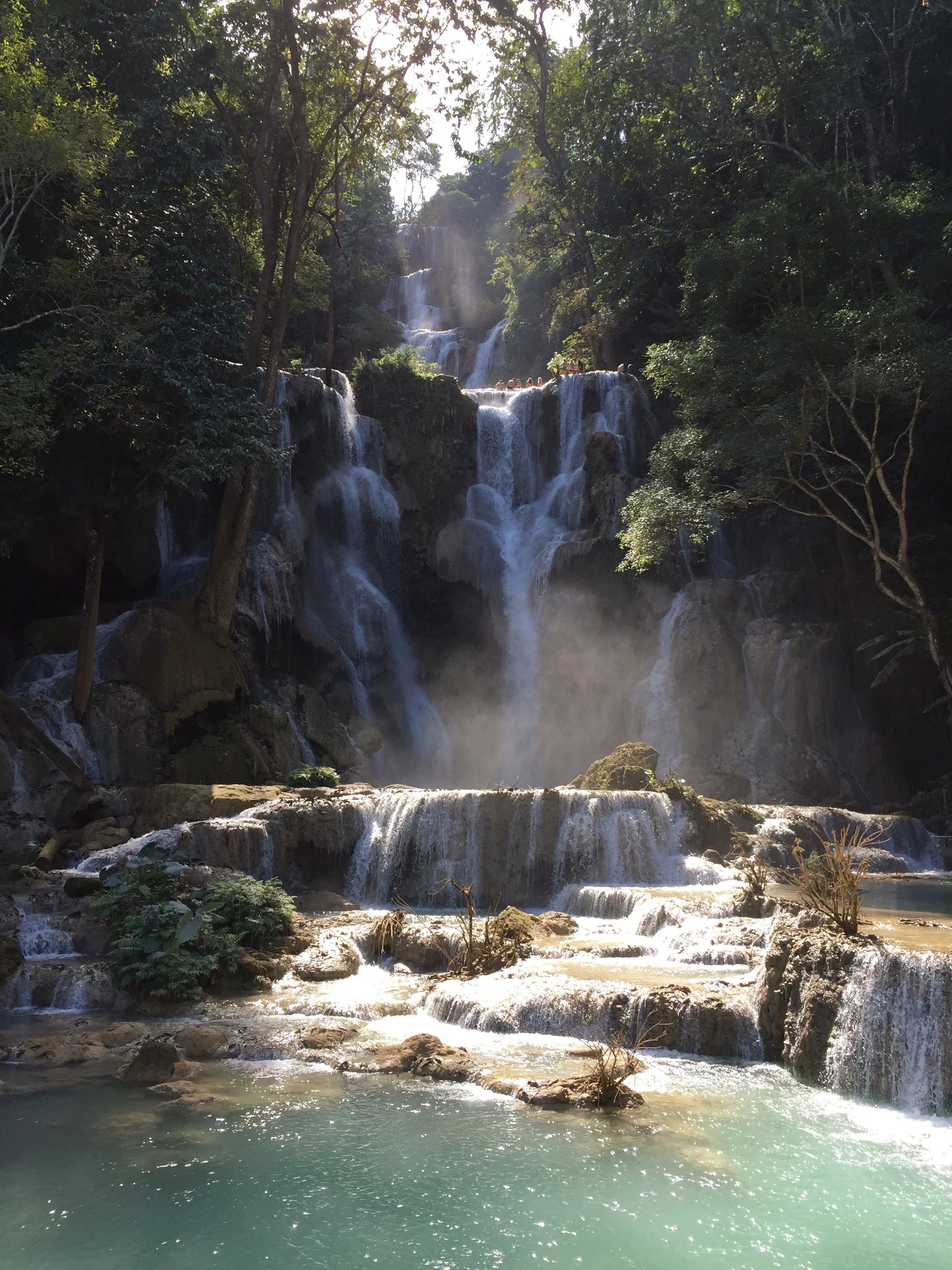The North of Thailand: Chiang Mai and Chiang Rai in 6 weeks
With a heavy heart, we left Luang Prabang in Laos to head to Chiang Rai for a 6 week stay in Thailand. In our trips in 2013 and 2014 to Thailand, we had discovered the islands east and west, but we never set aside some time to check up the north. We wanted to see if Chiang Mai really is the Mecca for Digital Nomads. The promised land didn't disappoint!
We took the bus at 17h for a 16 hours night ride: turns out that the sleeping buses only depart Luang Prabang to Chiang Mai on Mondays and Fridays. We left on a Wednesday and that meant sitting for the whole night. We didn't think it would be much worse than flying for 16 hours on an airplane, but we actually didn't foresee a couple of details that would break it for us: the most powerful aircon we have ever faced and the bumpiest road we can recall.
Even if we were wearing long trousers, our jackets, and we covered ourselves with the thick blankets that the bus company provided, we froze as the aircon was running wild all night. We begged the driver to turn it off, but he didn't understand us or it just worked on its own. In any case, the results were grumpy passengers and an inability to sleep all night - at least for me.
The roads on Laos are still in bad condition in most places, but on top, the road we took was full of turns. The combination made it impossible to read or watch something to fight the sleepless night.
We crossed the Laos - Thailand border at around 7h, and this time things went really smoothly. Of course, we all had to pay 1$ again to get our exit stamp in our passports, but this is Laos! Once in Thailand, well, things are same-same old. But that means really good!
But first, the basics when you enter Thailand, because #priorities:
After bowing to respect Buddha, we made it by 10h to our guesthouse in Chiang Rai and right after we went to explore and find a nice place to eat. In the middle of our lunch, Cihan started to feel really sick and, after a while, it was clear that we better check things at the doctor's. Thanks to Cihan hard earned good karma, everything and everyone came to our help: the lady having lunch next to us was a doctor, by the time we were leaving the waiter in the restaurant had already organised a taxi for us, the taxi driver took us to the nearest hospital, which happened to be the public regional hospital, and when we arrived at the reception, a Thai lady who happened to speak German helped us translating to the doctors.
It took us around 3 hours all in all until everything was checked and we could go home with some peace of mind. The staff in the hospital was super kind to us and while the payment process was quite confusing (we had to go through at least 5 different desks to get all the different stamps and finally be able to pay), the experience was very positive. Ah, end result: 10€ bill, including medicines!
After such a tiresome day, we decided to go to bed - even if it was just 19h.
Next morning, with our bodies and minds back on track, we went to explore Chiang Rai's temples. Good thing that they are all next to each other! On our way, we said hi to the Clock Tower and went on, until we came across to the first temple of the day, Wat Phra Sing, which was free to enter and was really peaceful and empty.
Next, we went to the most important temple to visit in Chiang Rai, which is Wat Phra Kaew, the original home of the Emerald Buddha that now sits in Bangkok. The temple is surrounded by a beautiful garden and one of the buildings is actually a small museum about the Emerald Buddha's story and Chiang Rai's story within the Lanna Empire.
The next temple in line was Wat Ming Muang, more colourful but equally peaceful.
A whole morning had passed and after lunch, we felt like having a coffee and doing nothing. And luckily for us, Chiang Rai has the perfect place for that: the super awesome CAT'n'CUP Cat Café! It was our first time in a cat café, and even if I am more a dog person, I surrendered to the most beautiful and "well taken care of" cats I've ever seen. It was so good that we went to visit another time a few days later. OMG!
At night we checked out the famous Chiang Rai Night Market, which happens every day in the evening near the central bus station.
But the best markets in Chiang Rai actually take place on Saturday and Sunday: a bunch of streets are taken over by stalls of food, hand-made souvenirs and clothes. It's hard to choose due to the amazing diversity of dishes and the fact that most are not marked in English. Chiang Rai is a city of locals, and the market is a local hotspot as well. Just be adventurous!
We were lucky to be in Chiang Rai for the Flower Festival and Chinese New Year's celebrations that weekend, so next to the Saturday Market we found the 75 Anniversary Flag and Lamp Park fully decorated with wonderful tulips, orchids, lilies and more. Oh, the scent was just lovely! And on our way home, we found the clock tower lit and a picture had to be made and posted.
But of course a visit to Chiang Rai wouldn't be complete without checking the White Temple and the Black Temple. It's in all the guides and recommendations on the Internet and while I was expecting crowds in the White Temple, I was shocked how full the Black Temple was.
To start from the beginning, from the first minute in Chiang Rai, we saw tours everywhere to visit the two temples and then the Karen hill tribe (yes, in this case, the subtribe of women with long necks made using golden rings) and a couple of waterfalls. The tours were priced around 1.000 THB, which would be around 25€. I was tempted to go on my own and pay the price, but I wasn't really comfortable with visiting the Karen hill tribe. I read as a teenager an article about their lifestyle full of details about the pain the rings cause and the social exclusion they live in. I felt that going on a visit to take a picture make them part of a zoo, so I started looking for alternatives. Which basically meant visiting the temples on our own - luckily that saved us quite some money!
Some background infor about the White Temple from Wikipedia: "By the end of the 20th century, the original Wat Rong Khun was in a bad state of repair. Chalermchai Kositpipat, a local artist from Chiang Rai, decided to completely rebuild the temple and fund the project with his own money." The pictures were really promising, so scouring the Internet I read that for 20 THB (around 0,50€) you can get a ticket for the buses in the Chiang Rai bus station going to Wat Rong Khun: basically, any bus going south would pass along the White Temple. Same in the case of the Black Temple - you just need to find a bus that goes north and you can jump in for 20 THB.
That's what we did then and it worked like a charm: in 30 minutes we were in front of the White Temple for a late afternoon photo session. I mean, the temple is as kitch as kitch goes, but it's just made for pictures! For 50 THB, the temple even includes a visit to a pretty spectacular golden toilet house and a couple of more structures being built in the back at the moment. So it will surely get more interesting in the years to come...
Next day we decided to go and check the so called Black Temple, whose actual name is Baan Dam - Black House Museum. It's not really a temple, but contrasting it with the white one works for marketing purposes! We took again a bus for 20 THB and walked a bit until the Museum - it was easy to find because the crowds started on the main road already. It might have been that we went late that morning, almost afternoon. But it was a full house, and we paid 80 THB for the entrance.
The place is very interesting, in my opinion - I had never seen such a crazy place before. It's a home, an exhibition, a studio, a park. It's basically whatever you want to call it, but if you dislike watching animal bones, skins and horns, maybe this is not your place. There are big halls and small huts, and many of the rooms are closed for various reasons: some are the ones used by the artist when he is around, according to Thaizer.com. Thawan Duchanee is a controversial figure in Thailand, but it's definitely a fresh vision in a country where so many institutions are sacred.
We went back home after a bit less than an hour walking around - it was very challenging to make pictures. I was waiting almost 10 minutes in each hut for other tourists to finish their selfies. There were even dressed up ladies with their own photographer following them around, stopping for long photo-shootings. I couldn't stop wondering if they were their partners, and it was all a collective bad case of Instagram husbands...
We walked back to the main road and crossed to the other direction. It took us about 10 minutes to hail a minibus or songthaew that would take us back to Chiang Rai's city center. We had read everywhere that they charge 20 THB but we didn't believe it until we saw it. Or better said, until we paid exactly that once back in the old bus station!
We didn't do much more in terms of tourism in Chiang Rai. Again, it was very tempting to go for an elephant tour, but it didn't look like there were any decent kind of tour that I could afford with the budget I had in mind. Even when you don't ride them, if you feed them sugar cane, you are also not giving them proper food for their diets. And a bunch of 30 tourists around them are also not the most respectful environment for the elephants.
So we focused on eating. And here's the jewel of the crown of our Chiang Rai's experience: we ate the most amazing Khao Soy in quite a hopelessly rude place - but OMG! Pho Chai Restaurant serves it with chicken, pork, beef or fish and until this day, we haven't found a better Khao Soy. And we've been hunting like crazy for it in Chiang Mai!
That last picture is only to show how Line characters like Brown can be used to sold ANYTHING in Asia - in this case, a face mask...
And this one to show you the book that started my year: I finished it up in 4 days, I couldn't stop!
And slowly, our week in Chiang Rai came to an end. I loved the relaxed vibe of a very authentic and normal city in Thailand. People are doing their thing, and while there are enough tourists, the economy and people's life and activity doesn't feel sucked by it. The city itself is lively and comfortable - life just feels real.
Chiang Mai was calling, and we got in a 3 hour bus that took us to "the pearl of the North" , famous for being a University city, a hipster and digital nomad Mecca, with great markets day and night, awesome food, and of course, for seasonal burning of fields in February - March that cloud the views of the surrounding mountains.
We got to Chiang Mai on the 1st of February - 2 days before my birthday!
Probably thanks to the upcoming burning season, we found an apartment in Green Hill with gym and pool at an unbeatable price: 260€ monthly, to be shared between both of us - that's 130€ monthly rent. Located next to the MAYA mall in the Nimman area, it's outside of the Old City center, but that's nothing a motorbike can't fix - and yes, in Thailand you always need a motorbike. For us, it added 100 THB daily - that's 2,5€ a day, to split between 2.
The fact that the rent doesn't include extras like cleaning services, electricity, water and has not a real kitchen will bring the final price up for us (it was actually 800 THB extra, 20€ together). I mean, food served at the restaurant by the pool cannot be called expensive but is not that cheap either for Chiang Mai's standards... but at least is delicious!
But really, who cooks home in Chiang Mai? After a few days of exploring we concluded that eating out, while not healthier, it is definitely cheaper. Dishes in restaurants range between 2€ and 4€, but street food is around 1€ to 2€ per meal. Even in malls like MAYA or Kad Suan Kaew, food courts offer main dishes starting at 30 THB, which is less than 1€. A single lettuce in the supermarket costs the same, so I had to say goodbye to my plans of cooking during the month - I need to save up for Japan!
The only downside is the amount of plastic waste eating out and on the go creates. Just like ready meals, buying portions of fruit already cut and ready to eat is available in every corner for a few Euro cents. If you want a fruit juice, they are available for 0.50€ but of course you'll be using yet another plastic container. In Chiang Mai and Chiang Rai we spotted quite some bowls and recipients made of paper, but there's still a long way to go... I'm very tempted to tell the stalls about the "Pfand" system or bring along the washed up cups for them to re-use...
The only day we got our food to take away - after seeing the amount of plastic waste we created, we didn't repeat.
One of the first things we looked for was a good Khao Soy: we found a nice list of the bests around Chiang Mai and luckily we had one nearby in Nimman Road, which happens to be the hipster neighbourhood. We were looking for Khao Soi Nimman, but we ended up in Coffee Cottage, which also serves great Khao Soi and the lady owner was very friendly with us. And just next to it, we found Chiang Mai's "Betta House" 😍
A few days in we found our favourite restaurant though: around the corner from the apartment, on the opposite direction to the MAYA mall, we discovered Joe Kitchen. There are a few stalls in front of the 7 Eleven every single night, and a couple of restaurants apart from Joe's in that area, and all of it seems to be right on the road somehow. But if you beat the first impression, sit down at Joe's tables and open the menu: Joe can cook ANYTHING! There's around 100 dishes to choose from, the portions are BIG and you'll have to make a real effort to spend more than 3€ per meal.
Basically, every night that we decided for another place to eat, we regretted to have cheated on Joe, who by now should change the name of the restaurant to Joanne... that's the beauty of Thailand!
On our first week around, we complied with our tourists status and visited the Chiang Mai Night Bazaar, and sadly we were unimpressed with the quality and price of the food and the wares. While lively and interesting to see, we've been spoilt after Laos and Vietnam. So we went only once.
On our first weekend, we were lucky to enjoy Chiang Mai's Flower Festival as well, which comes with a parade of wagons decorated with flowers (and almost all featuring the deceased King), and a bonsai and orchid contest. We walked along the Nong Buak Haad park and it looked and smelled wonderful with so many flowers all around.
Walking and walking, we came across the Sunday market, which is in my opinion much more interesting than the daily night bazaar. I find the Old City a bit too crowded and touristy (me, who loves crowds!) but the street market felt just right and the prices moderate in comparison with the bazaar. The Sunday market takes place along the Rachadamnoen Road, that completely closes to traffic, making the experience of walking around much more comfortable than in the night bazaar. On top, the market has the Phra Singh Temple in one of the ends, so it is a great opportunity to visit before or after enjoying the walk in the Sunday Market.
In the following days, we fell into our Chiang Mai routine: sleeping a lot, doing exercise in the gym, spending some time in the pool from time to time, working in our projects, and hunting for foodie finds. The most remarkable in our first days in Chiang Mai were Ramon Cafe, formerly known as Din Dee Mudhouse Cafe, which is truly inside a mudhouse; Cherng Doi Roast Chicken, the most amazing juicy chicken I had apart from the Jerky Chicken in Berlin's Karneval der Kulturen; and Beast Burger, which was our third burger in our trip after a Burger Fuel experience in New Zealand and in Australia.
One amazing discovery we did in those days was the Camp coworking space, sponsored by the Thai telecom company AIS - it's inside of the MAYA Mall, and it's open 24/7.
After a few days of relaxing and setting the touristy things aside, we were ready again for discovering new places and visiting temples. The most famous one in Chiang Mai is Wat Phrathat Doi Suthep, also marked everywhere as just Doi Suthep. We took our scooter uphill for around 20 minutes of bends right and left, in a road with mostly big buses and tuk-tuks bringing up tourists. Doi Suthep is the perfect place to get some beautiful pictures of Chiang Mai, unless it's the middle of the burning season - then your pictures will be covered in smog.
The temple itself is worth the 50 THB and the set of stairs you need to go up to visit it. I would compare it with the Catalan excursion to Montserrat: it's all uphill, full of tourists, but the walk upstairs is a food feast and the temple a blast. As many Thai temples, Doi Suthep is actually better described as a compound. Shops, monk housing, main temple and satellite shrines are scattered around, and there's a big terrace from where to enjoy the views and mostly the busy airport of Chiang Mai. Every five minutes or so an airplane takes off!
What's pretty fascinating to see is many Asian tourists coming from many other countries to enjoy the beauties of Thai temples and see them as marveled as Europeans with the golden overflow and the different fascinating scenes happening in every corner. While Thais pray (or try to), there's a big swarm of other Asian tourists trying to capture the different moments. As intrusive as it looks, Thais don't seem to mind - either they are too used to it or they are too polite to say something.
After our visit to Doi Suthep, we decided to keep going uphill. We wanted to visit the Hmong Hill Tribe and check one of the family coffees we had been recommended. The road was a big adventure: after Doi Suthep, suddenly it is full of big bumps and with the shadows of the trees it's very hard to figure out if it's shadows or big holes on the pavement. After a couple of scary jumps, we reached the Hmong Tribe Market. We expected to find a small little market and it actually was huge and very well set. On our way up the mountain, we found a little restaurant that offered the Muslim variation of Khao Soi. We didn't think about it one second more and in a few minutes we had the Khao Soi of our dreams in our table. The smallest chicken leg was inside and I thought: either this is how organic and home-grown chicken looks like or they just killed a bird.
Right after, we continued up, up, up and finally we reached the Hmong Doi Pui Family Coffe cafe, which serves the coffee that the family owning the place picks up from their own plantation. The views from the cafe are very pretty, no matter if you are sitting inside the cafe or in the terrace outdoors. And yes, the coffee is delicious - at least is what Cihan said. I'm not drinking coffee since a few months! The owner also sells the coffee he grows and a variety of teas, specially delicious is the Mulberry Green Tea.
Next day we paid a visit to the Warorot Market, which is the perfect place to buy local foods and ingredients for Thai dishes. The market is packed with wares and scents we were smelling for the first time, and most of the costumers walking around were Thai. We found the food court and of course we ordered a Khao Soi and a couple of more dishes - always be sampling! The Warorot Market is also in the center of the Chinatown, so just in one of the exits we found a small but colourful Chinese temple.
Another very little and amazing market was on the north-east corner of the Old City, very close to the Funky Dog Cafe - Ming Muang Somphet Market was a little surprise walking around. This is the only place in the center of Chiang Mai where I could have shopped effectively for my plan to cook at home: a lettuce, 3 tomatoes, 1 cucumber and 2 limes were 30 THB! I did buy on a stall well inside the market though - always beware of the shops at the entrances.
Our visit to Myanmar was approaching fast, so we went to the Consulate in Chiang Mai to get our visas. We had read on the Internet that the visa on arrival that you can get online was 50$, while picking it up on a Consulate was 30$. So off we went with our 2 passport pictures, flight in and out of Myanmar and passports. Turns out that the prices have changed recently and now the visa on arrival is 60$ and the one done offline is 40$. Apart from that, the process was pretty painless: we handed out our passports on Monday morning and had them back on Wednesday afternoon.
Right after picking them up, we decided to visit the temples around the corner: Wat Lok Molee, Wat Mo Kham Tuang, Wat Rajamontean and Wat Khuan Khama are in the main street of the north side of the Old Town square, on one side and another. It is true that after at least 3 months visiting places where temples (Wat in Thai, just in case you didn't figure that one out) are the main sight, one starts developing temple fatigue, but I still enjoy having a look inside.
In this case all the above mentioned temples asked for donations, which made the visits more casual. The beauty of small temples is that they are almost empty at odd times and soon enough you start seeing them as cultural spaces where people come to pray but also to socialize and hang around.
Next day we continued our temple visits, but this time we combined it with the Samoeng loop: we took the motorbike to ride the roads surrounding the big mountain next to Chiang Mai, where Doi Suthep is. The Wat Phra That Doi Kham temple was really a blast - it features a huge Buddha and even better views to the airport than Doi Suthep.
After half an hour snapping some pictures, we went in the lookout for an awesome cafe a friend recommended: Praw & Plean didn't disappoint! Not only has amazing smoothies and lemonade, but also is a café within a garden with the cutest decoration ever. The prices are pretty moderate considering the setup and the staff was super friendly. Other suggestions for nice places in the Samoeng loop would be Baan Suan Ka Fe and Bannok Cafe but we didn't have the time to try them out.
After Praw & Plean, we continued on the road and soon the best came: up and down, incredible bends and a pretty impressive view point right at the entrance of Samoeng, where of course a group of Aussies with their incredible motorbikes where hanging out. I can't blame them! Also there was a lady selling fruits, and the strawberries were tiny and just delicious.
We continued riding on the road and soon we were passing next to strawberry fields, elephant camps, monkey camps and a few cafes with tables and chairs on the river, which sadly we didn't take the time to visit... All in all though, the loop took us around 3 hours, because we went slow and did our stops, but it can be done faster or slower. If all this sounds appealing to you, you should go for it and more following this guide.
After such a good experience, we looked for more loops and trips to do and we found a good excursion to do to the Sankamphaeng Hot Springs. We didn't know exactly what to expect after almost an hour of riding in a straight line on the motorway, but we were not disappointed. The entrance costs 100 THB and in the shops surrounding the entrance we saw quite some stalls selling baskets full of eggs. We were a bit puzzled at start, but we found out soon enough what was the meaning of it all. While foreigners visit the hot springs to bathe and relax, most Thais use the thermal waters to boil their favorite type of eggs and eat them while soaking their feet on warm water. I'm serious!
It took us a long walk around to find the hidden swimming pool and we entered still a bit apprehensively - it reeked to rotten eggs, but it was way too relaxing after a few minutes. It wasn't so pleasant to shower with smelly water after the pool and go home like that, though!
We then proceeded to ride around the area of the hot springs, which also can be done as a loop until being back on the motorway. The scenery was full of rice fields and it was an absolutely empty road - it can be that the Thais avoid the midday to ride a motorbike under the burning sun!
The plan was to head back to our apartment after the hot springs, but on the way back we could see from the road a temple with a big golden Buddha on top of the hill. We had to take a look, and a few minutes later we were at Wat Phra That Doi Saket, which sports not only one but two giant Buddhas that absolutely stole my heart. From the biggest ones, the views to the Sankampaeng loop area were just dreamy.
That same night we did something truly special - at least for us: we had our first pizza of the trip. And not just any pizza, but a delicious one at Why Not? - a real Italian restaurant with an Italian owner that imports basically everything to Chiang Mai. It was over 10 euro each, but it was SO worth it... On our way back to the apartment, we strolled through the Think Park Night Market, directly opposite the MAYA mall, and we wished we had not eaten so much!
The days were passing fast and our last week in Chiang Mai was upon us. We definitely started speeding up and, checking back, I have to say we covered quite some ground in our lasts days. First things first, we finally made it to Khao Soi Nimman and it didn't disappoint: there were as many varieties of Khao Soi as we could think of, including one with the traditional Chiang Mai sausage, another with squid, and even one with omelette. Here's my happy face after the second best Khao Soy I ever had.
I also took a whole afternoon to visit the most important temples in the Old City, which I had passed many times but not always with the appropriate clothing: when visiting a Thai temple, covered shoulders and long trousers or long skirts are a must. I went to Wat Pra Sing first, which is the main temple in Chiang Mai. The heat was starting to be unbearable by end of February, so I was really glad to wander around the garden and stop at the shade. Wat Pra Sing is a big complex of temples, so a visit will at least take an hour.
I had planned to visit Wat Chedi Luang next, but on my way I found the smaller Wat Phan Tao, which happens to be a temple made of wood. Inside of it one can see an exhibition of pictures made on Buddhist festivals and outside in the garden a Buddha rests protected by a pond and a few lazy dogs.
Wat Chedi Luang is, in my opinion, the most impressive temple in Chiang Mai. It's one of the few where an entrance ticket is charged, but the 60 THB were more than worth it. Chedi Luang is composed by at least 10 temples - shockingly the first one next to the main gate forbids women to enter inside. But the rest is open for full exploring and it's just fun to walk around: there's enough room to get your pictures of the big structures and lots of shrines dedicated to the different animals in the Buddhist calendar. I even joined the Monk Chat, an initiative that allows you to sit down to talk with Monks in English about your life and their life, ask all the burning questions about them and the other way round.
I couldn't stay long, since we had an appointment to visit the Saturday night market next to the Chiang Mai Gate with friends. On my way I found again a lady selling coconut ice cream and I had to stop. We spent the rest of the evening eating like pigs, and who can blame us? I think these pictures speak for themselves!
On Monday, that is 2 days before leaving, we decided to invest 1.000 THB (25€) in a cooking class: it's a classic activity in Chiang Mai but until the end of our stay we didn't see the point. After sampling such good food for a month, we couldn't see how we could live without papaya salad or Khao Soi in the future, so it was probably a good idea to learn how to cook Thai food by ourselves. We chose Mama Noii Cooking School after reading a couple of reviews online and we were absolutely satisfied with our decision.
They picked us up at 9h and after picking up a second couple, we headed to the San Pa Khoi market, which was near the cooking school. After a short lecture about the ingredients we needed to buy there and a walk around for taking pictures, we drove to the cooking school, which also happens to be an organic garden. Basically, we didn't buy much in the market because most of the ingredients are grown in the school.
After sitting down to decide which dishes of the menu we were going to prepare, we were placed around the table and our teacher became a hell of an amazing MC. I was wondering how we were going to cook different dishes together, but I discovered it soon enough: she was giving us orders at the same time. Regardless our dish, we all did our own steps 1, 2, 3... at the same time, while the assistants would pass us the ingredients and accessories we needed. A truly impressive choreography!
Each of us prepared 6 dishes during the day and after eating the first 2 we were so full, we had to take the rest home after we were finished at 15h. We also got a recipe book with the instructions on how to prepare the dishes we didn't do ourselves on that day. In my case, I chose to cook Fried Spring Rolls, Pad Thai, Som Tum (Papaya Salad), Tom Kar Gai (Chicken in Coconut Milk), Khao Soi and Tub Tim Krob (Red Ruby Water Chestnuts in Coconut Milk). I'm just so proud of the incredible Khao Soi I prepared that I'm determined to keep improving it to sell it on the Thai Park in Berlin some day. I'm serious!
On the next day, I took some time in the last hours in Chiang Mai to go up the MAYA mall to get panoramic view of the city, snap some pictures of the Thai Boxing studio inside the mall and of the Green Hill apartments and its badminton court; visit Punspace - a very famous co-working space in Chiang Mai - and keep eating sweets until I dropped. And of course, scrapping some last minutes for teaching others about the beauty of Khao Soi and go half way up to Doi Suthep to get a final picture of Chiang Mai from the mountains without smog.
That's how February ended for us, and on 1st March we had to head to the airport - Myanmar was the next stop in our trip and we were thrilled to be on the road again. Talking to our taxi driver, he told us he was born in Bangkok but moved to Chiang Mai 12 years ago and never looked back. While we still need to discover how daily life is in Bangkok, we could very well understand how Chiang Mai had trapped him in - we're still trying to find any fault to the north of Thailand. And we hope to have the opportunity to keep digging, because we are already thinking how and when we can come back!
A month is a long time in Chiang Mai, but we didn't feel like it actually was. There's quite a lot to do around the city and also, we needed a rest after 3 countries where we traveled non-stop. So there are a few things we didn't manage to do: most importantly a visit to Pai. The 5 hours road trip to get there was our biggest obstacle to find a moment to go, but we would definitely like to visit next time around. If you want to go to Pai, here's a very good guide of things to do!
Another big miss was Khao Soi Khun Yai, the most local Khao Soi restaurant in our list. The place opens only in the morning until 14h and that's why we found it closed the time we tried to go and didn't manage to be on time again. It's a big miss because our hero Mark Wiens has been there...
Another big miss at this point was our inability to fix my Mac, which broke down in our last days in Australia. We wasted most of our 3 weeks in Bali waiting for a repair service to figure out what had happened, and we had hoped we could fix in Chiang Mai somehow. We did find a couple of places that could repair it, but for 500€ one, and another, which promised to do it for 300€, didn't deliver in the end.
So I finally bought 4 days before leaving an Asus netbook for 200€ that I hope allows me to continue with my blogging here and writing on Instead of Kids during the rest of the trip. It's a challenge to decipher my cute Thai keyboard, but I'm glad I have a keyboard after all...
All in all, Chiang Mai is a fantastic destination for foodies and digital nomads. If you have a few days only there, do stay in the Old City and make the most of it. But for me, just like Berlin, Chiang Mai is a place where to live and take life slowly. In case you have more days to enjoy there, then try to stay out of the Old City and embrace the local life as much as the Thai language allows you. Definitely a great investment of your time and a big saving tip for your wallet.
The last picture I took in Chiang Mai was at the airport. The painting caught my eye and it somehow tells me I will be back.
I hope my writing puts Chiang Rai and Chiang Mai in your bucket list. If you've already visited, let me know about your Chiang Rai and Chiang Mai experiences and questions in the comments: I'm more than happy to "geek out" about these two amazing cities!













































